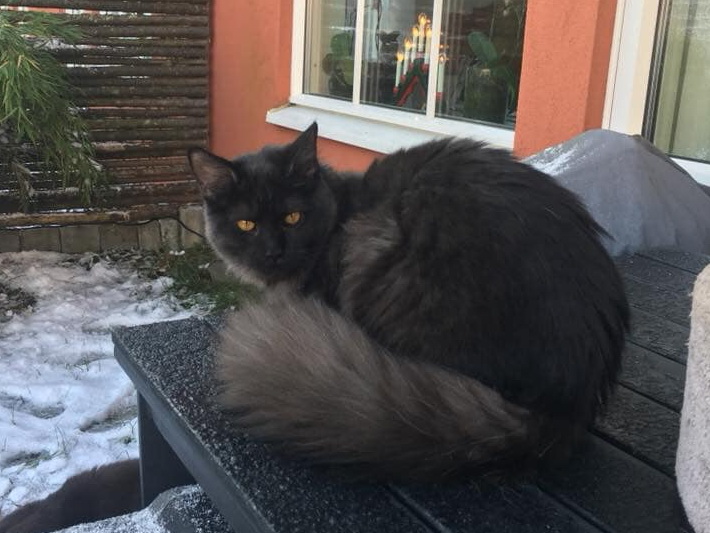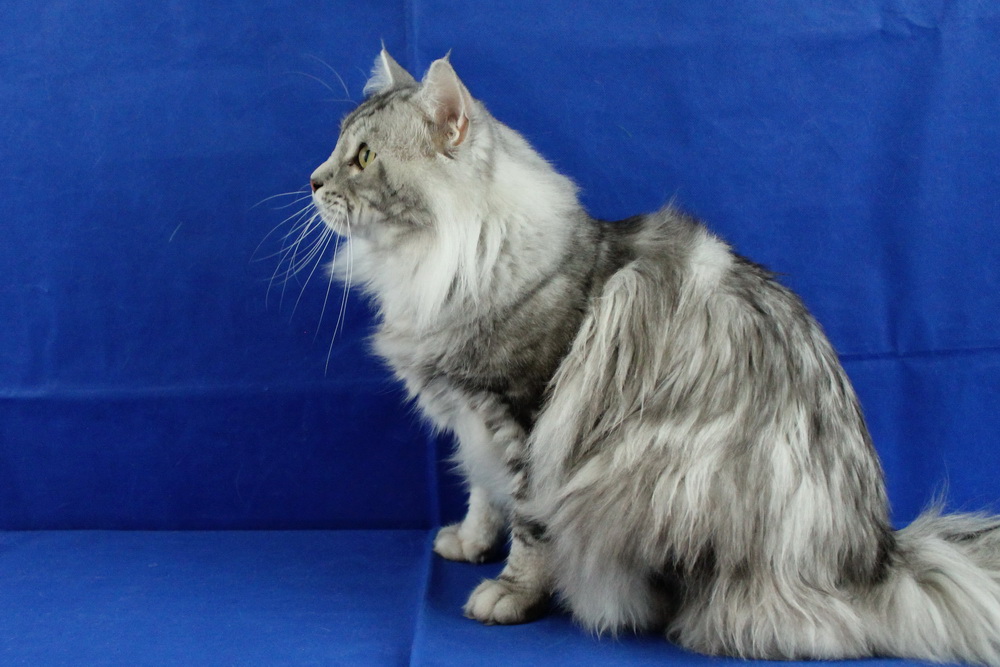This is a trait that is often misunderstood, much because of the daily names given to this trait.
The silver trait, genetically called the inhibitor trait, is a trait that suppresses the color at the base of the hair so which makes the bottom of the hair pure white.
Then we have the purely linguistic that can make it hard for all who are new to this, a cat with this gene is called different depending on whether it is agouti or non-agouti.
Agouti = Black silver tabby, red silver mackerel tabby, blue silver ticked tabby, etc….
Non-Agouti = Black smoke, Red smoke, Blue smoke, etc ...
In this article, I will talk about the trait itself and will just call it silver.
The silver trait is designated I (for the inhibitor gene).
|
ii |
Non-silver |
The cat has no silver gene and will not show silver nor pass down any silver. |
|
Ii |
Heterozygous silver |
The cat has one copy of the gene and will be able to give either silver or non-silver to its offspring. |
|
II |
Homozygous silver |
No matter what the cat is mated with, all offspring will be silver if the parent is homozygous since it will always inherit one copy of the gene (I). |
Since silver is dominant, the rule is what you see is what you get, if you see silver the cat is silver, and if you do not see silver there is no inhibitor gene present. But most rules got exceptions, I just want to mention it very briefly and it’s not something we should go deeper into, but it has been proven over the years that the silver sometimes hides, in non-agouti blue cats. The cat appears to be non-silver, but it got the inhibitor gene and will give it to its offspring. So there are cats with "invisible" silver, although this is relatively uncommon, and as far as I know happens ONLY with blue non-agouti cats for some reason.
What makes it confusing for those new to colors in cats are that this trait is given different names depending on if the cat is an agouti (with pattern) or a non-agouti (without pattern).
Let's take a black cat as an example, let's say you got a black cat and you add the silver trait, you will then get a "Black smoke", if you instead got a Black tabby and add the same trait it will be called a "Black silver tabby", it's the same trait it will be inherited the same way express the same way, just two different names for the same trait. We sometimes hear people say they got a black smoke tabby, this shows how confusing this is for new breeders and owners.
For some reason shaded is also a trait that's been misunderstood and thought to be connected with the silver trait which is wrong, shaded is one name for the Wideband trait which can express itself on non-silver as well as on silver cats and has actually nothing to do with the inhibitor gene itself.
But this will be brought up more closely in another article.
Let's do a test mating, one can easily see that two non-silver will never ever be able to get any kittens that are silver, however, two heterozygous silver will be able to get kittens that are non-silver.
As can be seen in the table below, where both mom and dad are non-silver, the kids will also be non-silver. Thus, as seen here, there is no I, only i.
|
Male i |
Male i |
|
|
Female i |
ii |
ii |
|
Female i |
ii |
ii |
If we take another example then we will see another scenario here, both mother and father are here Silver but both are heterozygous and got 1 set of the silver trait.
In this example, 50% will be silver but carriers of non-silver. 25% will be homozygous silver and 25% will be non-silver.
|
Male I |
Male i |
|
|
Female I |
II |
Ii |
|
Female i |
Ii |
ii |
If we take another last example let the female be homozygous silver, and then we will see below that all offspring become silver. 50% will be heterozygous and 50% homozygous.
|
Male I |
Male i |
|
|
Female I |
II |
Ii |
|
Female I |
II |
Ii |
There is not much more to say about silver genetics when it comes to silver itself. However, silver can be tricky and can have a wide range of expressions, everything from very vague silver to cats with razor-sharp contrasts. And please remember there is a big difference between what you might get in theory and what you really get. Even if we expect 50/50 it can very well be zero or 100% or anything in between.
I will not bring up all the different patterns and colors, I will just use black as an example.
 |
 |
| This is a very good example of a Blacksmoke! A good black smoke should appear black when looking at it, it's first when the fur moves you would see the very pure bright white base of the coat. A Blacksmoke should have 50% white. |
A Blacksilvertabby on the other hand got banded hair, they should also have 50% silver. A silver tabby with more white at the base might be wideband, not enough to be shaded, but they might have the wideband trait. However, it might also be just polygenes. |
Written by: Malin Sundqvist










